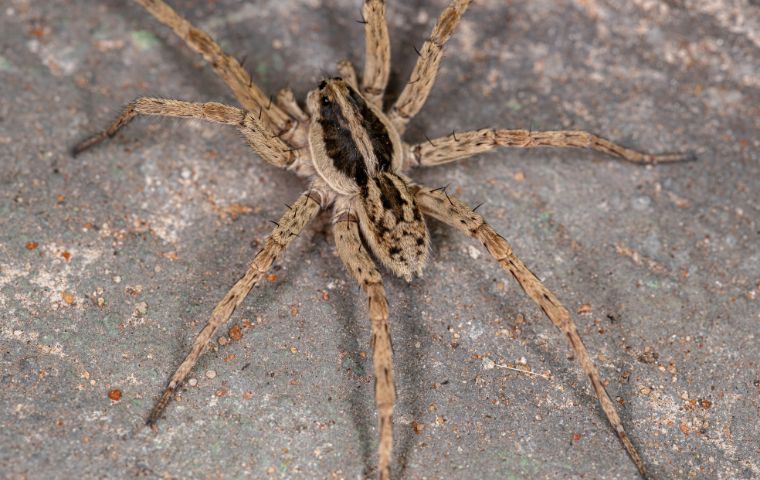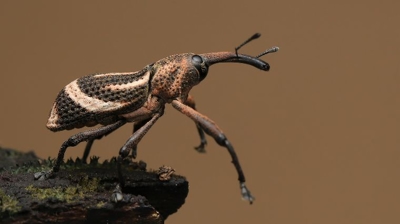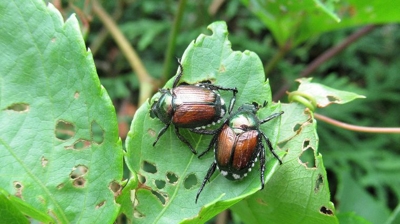
Wolf Spiders
What Are Wolf Spiders?
Wolf spiders are a group of robust and agile spiders belonging to the family Lycosidae. Unlike many other spider species that rely on webs to trap their prey, wolf spiders are ground-dwelling predators that actively hunt and pounce on insects and other small arthropods. Their name is derived from their wolf-like hunting behavior—they stalk and chase down their prey with speed and precision.
Are Wolf Spiders Harmful?
Wolf spiders, while generally not aggressive toward humans and often beneficial in controlling pest populations, can still be considered harmful in several contexts. Here are the main ways wolf spiders might pose harm:
- Home Invasions and Repeated Encounters: Wolf spiders are solitary hunters that do not build webs to catch prey; instead, they roam actively in search of insects. During colder months or periods of excessive heat or drought, they may venture indoors seeking shelter, water, or prey. Their presence inside buildings can be considered a nuisance, especially if multiple spiders are encountered regularly, their appearance alarms children, pets, or guests, or they are found in bedding, shoes, or laundry, increasing the risk of accidental contact.
- Bites and Mild Envenomation: Although wolf spiders are not considered medically dangerous to humans, they can bite if provoked or accidentally trapped (e.g., inside clothing or bedding). Their bite may cause localized symptoms such as redness, swelling, mild pain or itching, and in rare cases, nausea, dizziness, or headaches. These symptoms usually subside without medical intervention, but individuals with allergies or sensitivities may experience stronger reactions. Secondary infections can also occur if the bite is scratched or improperly treated.
- Pet Safety Concerns: Though rare, a wolf spider bite may irritate small pets like cats, dogs, or exotic animals. Most pets will recover quickly, but symptoms such as swelling, licking, limping, or behavioral changes should be monitored. Repeated exposure or multiple spiders may elevate this risk.
- Psychological and Emotional Distress: Especially in individuals with arachnophobia or a general fear of spiders, the presence of a wolf spider—especially due to its relatively large size, fast movements, and aggressive hunting behavior—can cause significant emotional stress or anxiety. This is particularly true if they are spotted inside homes, garages, or other frequently used spaces.
- Pest Control Complications: From a pest control standpoint, while wolf spiders themselves eat insects and are often seen as beneficial outdoors, their presence inside may signal an underlying insect infestation (they follow their food sources), poor exclusion practices (gaps, cracks, or open access points), and/or moisture or environmental issues (high humidity or cluttered areas they can hide in).
While wolf spiders are not deadly and don’t seek human interaction, they can be considered harmful through their bites, psychological impact, disruption of indoor environments, potential pet interactions, and implications for larger pest problems. Their presence indoors should not be ignored, especially in homes or businesses where safety, comfort, or pest control standards are a priority.
Learn more: Are Wolf Spiders Dangerous?
Learn more: Do Wolf Spiders Bite?
Learn more: Are Wolf Spiders Poisonous?
Types of Wolf Spiders
- Carolina Wolf Spiders: The Carolina wolf spider, also known as Hogna carolinensis, is a species of wolf spider that is found throughout the southeastern United States. They are one of the largest wolf spider species in North America, with a body length that can range from about 1.5 to 2 inches (4 to 5 cm).
- Rabid Wolf Spiders: The rabid wolf spider (Rabidosa rabida) is a distinct species within the wolf spider family (Lycosidae), commonly found throughout the eastern and southern United States. Despite its alarming name, it does not carry rabies and is not unusually aggressive. The name refers more to its erratic, fast movements than to any threat to humans.
- Tiger Wolf Spiders: Tiger wolf spiders are a group of wolf spider species that are known for their distinctive pattern of black and yellow stripes on their bodies and legs, which resembles the stripes of a tiger. Some common examples of tiger wolf spiders include the Carolina tiger spider (Tigrosa carolinensis) and the banded garden spider (Tigrosa helluo).
Wolf Spider Appearance
Wolf spiders are a type of spider that belongs to the family Lycosidae, which is one of the largest families of spiders in the world. These spiders are known for their large size, powerful legs, and distinctive hunting behavior.
- Wolf spiders range in size from small to large, with females usually being larger than males. They have eight legs and two large eyes in the front of their head, which are reflective and help them to see in low light conditions. They also have six smaller eyes arranged in a 2-2-2 pattern on the top of their head.
- The coloration of wolf spiders varies depending on the species and habitat, but they typically have a brown or grayish-brown color with stripes or markings that can be black, white, or tan. Some species have a more mottled or speckled appearance. Wolf spiders are hairy, which helps to protect them from predators and also gives them a fuzzy appearance.
- Wolf spiders are active hunters and are often seen running along the ground or up walls in search of prey. They do not build webs to catch their prey, but instead, chase and pounce on their victims. They are also known for their ability to jump, which helps them to quickly close the distance between themselves and their prey.
Wolf spiders are found in a wide variety of habitats, including forests, fields, deserts, and wetlands. They are typically found on the ground or on low vegetation and are most active during the night.
Learn more: What Do Wolf Spiders Look Like?
Learn more: Wolf Spiders vs Brown Recluse Spiders
Wolf Spider Habitats
Wolf spiders are ground-dwelling hunters that do not spin webs to catch prey. Instead, they actively stalk and pounce on their prey, making them most commonly found in areas where they can hide and hunt. Here's an overview of the most common places you might encounter wolf spiders:
- Grasslands and Fields: These open, grassy areas are prime locations for wolf spiders, especially because of the abundance of insects.
- Gardens and Landscaping: Mulched areas, leaf litter, and garden beds provide ideal shelter and hunting grounds.
- Under Rocks and Logs: They often take cover beneath stones, logs, or piles of wood to avoid predators and harsh weather.
- Forest Floors: Shaded, wooded areas with rich underbrush offer cover and moisture.
- Deserts and Sandy Areas: Some species are adapted to drier, arid environments and burrow into sand or soil.
- Around Human Structures: Wolf spiders are opportunistic and may come near or into human dwellings, especially in search of food or warmth.
- Around Building Foundations: Cracks in foundations, gaps under doors, and poorly sealed windows can attract wolf spiders looking for shelter.
- Garages, Sheds, and Basements: These undisturbed, cool, and dark areas are ideal hiding places.
- Woodpiles or Yard Debris Near Homes: These are perfect transitional spots from outdoor hunting grounds to indoor hiding spaces.
- Under Decks or Porches: These spots are often shaded, humid, and close to the ground, offering the right environment for wolf spiders.
- In Homes: Though they prefer the outdoors, wolf spiders can end up inside homes, particularly in cooler months or during rainy periods when their outdoor habitats are disturbed.
- Basements and Crawl Spaces: These areas are dark, moist, and have minimal human activity, making them prime targets.
- Laundry Rooms and Bathrooms: The moisture in these rooms can attract wolf spiders and other insects.
- Near Windows and Doors: If there's a small gap or an open space, they may enter while chasing prey or seeking shelter.
- Under Furniture or Behind Storage Items: Once inside, wolf spiders will seek out undisturbed locations to hide.
- Moisture and Humidity: They prefer slightly damp environments but can adapt to drier conditions.
- Abundant Insect Populations: Since they’re predators, areas with flies, ants, crickets, or beetles will naturally attract wolf spiders.
- Shelter and Hiding Spaces: Cluttered yards, woodpiles, and overgrown vegetation are all attractive to them.
You are most likely to encounter wolf spiders outdoors in areas with ground cover like grass, mulch, or rocks. However, they may also be found around or even inside homes, particularly in dark, quiet, and moist environments.
Wolf Spider Diet
Wolf spiders are highly effective hunters with a diverse diet, and they play an important role in natural pest control. Unlike web-building spiders, wolf spiders actively roam in search of prey, using their keen eyesight and speed to ambush or chase down targets. Wolf spiders are carnivorous and feed primarily on other small invertebrates. Their most common prey includes insects such as ants, beetles, grasshoppers, crickets, cockroaches, moths, flies, earwigs, other smaller or similarly sized spiders (including other wolf spiders in some cases). They may also consume various non-insect arthropods such as centipedes and small scorpions.
Though less common, wolf spiders may also eat tiny frogs, lizards, or baby snakes, though this is not typical and happens mainly in the wild under unique circumstances.
Learn more: What Do Wolf Spiders Eat?
Learn more: Do Wolf Spiders Eat Brown Recluse Spiders?

Wolf Spider Life Cycle
The life cycle of wolf spiders (family Lycosidae) follows several stages, beginning with egg development and ending with the adult stage. Here’s a breakdown of the life cycle:
- Egg Stage: Wolf spiders typically begin their life cycle when the female lays eggs. The female will lay her eggs in a sac made of silk, which can contain anywhere from 50 to 1,000 eggs, depending on the species. These egg sacs are often carried by the female or hidden in a secure location to protect the eggs from predators and environmental hazards. Some species may even construct burrows or retreat spaces for protection.
- Hatching and Spiderlings: Once the eggs hatch, tiny spiderlings emerge. These young spiders are fully formed miniature versions of adults but are much smaller. At this stage, the spiderlings are vulnerable to predators, so they remain close to the mother for protection. In some species, the spiderlings will ride on the mother's back for several days after hatching, providing them with both protection and access to better food sources.
- Juvenile Stage: After leaving the mother’s back, the spiderlings begin to hunt for themselves, though they are still quite small and rely on smaller prey. During this phase, they molt several times, shedding their exoskeleton as they grow. Wolf spiders typically undergo several molts (about 6 to 12, depending on the species) before reaching maturity. Each molt allows them to grow larger and develop more adult characteristics. They become more independent as they continue to grow and develop their hunting skills.
- Adult Stage: After the final molt, wolf spiders reach adulthood. They are fully capable of hunting, mating, and living independently. Adult wolf spiders are known for their excellent hunting skills, relying on their speed and vision to capture prey rather than constructing webs. Depending on environmental conditions and food availability, wolf spiders can live anywhere from one to two years in the wild.
- Mating: Wolf spiders typically mate in the late summer or fall, depending on their location. Males perform a courtship dance to attract females. Once a female is receptive, she allows the male to approach and mate. After mating, the male may die, while the female produces an egg sac. The female often guards the egg sac until the spiderlings hatch.
- Death: After producing eggs and caring for the egg sac, the female will eventually die, completing the life cycle. Males, on the other hand, generally have shorter lifespans and may not survive long after mating.
The life cycle of wolf spiders is relatively short, typically spanning one to two years. It includes distinct stages of egg, spiderling, juvenile, adult, and eventually death after reproduction. Wolf spiders’ ability to adapt to various environments, their predatory nature, and their unique method of caring for their offspring all contribute to their survival in the wild.

Hear From Our Happy Customers
-
"Exceeds Expectations"
I can’t say enough positive things about this company... The tech that came out, Jarvis went above and beyond my expectations. Thank you guys, I will continue using your services.
- Jake M. -
"Professional & Considerate"
I’m pleased with Miche services. Jarvis came today. Professional and considerate. Thank you!
- Judy B. -
"Wonderful Service"
Wonderful service. Jarvis is great. Took care of everything I needed. Thank you!
- Henry P. -
"Great Communication"
Tech was on time, communication was great, and he accommodated my needs.
- Alonzo W. -
"Very Knowledgeable"
The tech that arrived was courteous, professional, and very knowledgeable. He was Great.
- Uerial I. -
"Fantastic & Patient"
Jarvis was fantastic and patient. He answered my questions with an in-depth explanation and addressed all of my areas of concern. Would love for him to be my assigned tech going forward. Well done!
- Yonnette M.



